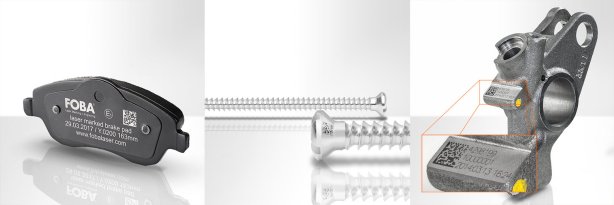Precision Laser Marking in a Limited Space
To meet international standards, traceability information must be readable by both machines and humans. Marked content such as the lot number, serial numbers and a 2D code cannot be simply reduced in size to fit. This applies particularly to data matrix codes as these are read by most commercial readers and so require a minimum size.
Mark alignment
With limited space, mark alignment must be absolutely precise as some of the information may not land on the part. Such a mistake may seem trivial but it could have a negative impact on the product’s workmanship.
To ensure that the mark is correctly applied to the right part, our product partners, FOBA, offer the patented vision technology system, IMP (Intelligent Mark Positioning). This is the basis of FOBA’s vision-assisted laser marking process.

The process offers laser-integrated validation tools that validate the part identity and automatically align the traceability information to that part.
Part Validation
Parts that look alike but differ slightly, for example, in terms of hole size or part length, can quite easily confuse the operator. A process that validates the part’s identity adds a safeguard that prevents the wrong part being laser marked.
An additional safeguard comes with a mark alignment feature that compensates for a part not being properly seated into its fixture and aligns the mark correctly to the part.
A 3-step process
A vision-assisted laser marking process has three steps. The first is in pre-mark verification. Here the part is validated to ensure it is the correct one and confirm that it is unmarked. The mark is then aligned relative to the position of the ready-to-be-marked part. The second step, the actual laser marking, then takes place.
Post-mark verification is the third step. This validates that the correct placing of the marking has occurred. It also validates that the marked character matches the expected content – Optical Character Verification (OCV).
This step adds another layer of verification by reading the contents of 1D/2D codes. It then compares these results with the expected content.
For more details and further information on FOBA’s high speed camera system IMP and the vision-assisted Holistic Enhanced Laser Process (HELP) please contact sales@tlm-laser.com
See also: Laser Marking Machines